bio exam 2
1/107
Earn XP
Description and Tags
Name | Mastery | Learn | Test | Matching | Spaced |
|---|
No study sessions yet.
108 Terms
Metabolic reaction
chemical reaction in organism that maintain life
catabolic
break down molecules into smaller ones
energy released
anabolic
small molecules become bigger
energy required
endogenic
takes energy to complete
exogenic
releases energy at the end of the reaction
Is photosynthesis ana or cata
anabolic
Is cell resp ana or cata
catabolic
Is Aerobic Decomposition ana or cata
catabolic
Is Anaerobic Decomposition cata or ana
catabolic
Is Nitrogen Fixation cata or ana
anabolic
Is Nitrification cata or ana
catabolic
is Denitrification ana or cata
catabolic
energy
capacity to do work or begin movement against an opposing force
potential energy
stored energy; chemical, nuclear, mechanical
kinetic energy
energy in motion; thermal, radiant, electromagnetic
law of mass action
rate of reaction proportional to concentration of reactants
How does temp affect reaction rate?
higher temp means fast reaction; vice versa
energy activation barrier
minimum energy required for reaction
How does activation barrier affect reaction rate?
decreased height has faster rate; vice versa
Enzymes
proteins that are catalysts in biological systems
How do enzymes affect chemical reactions?
Lowers activation energy by combining with reactant
Lock and key model
enzymes only bond with one specific substrate
Induced fit model
enzymes can change shape when bonded with a substrate
Where does glycolysis take place?
cytosol
Why is photosynthesis important in freshwater systems
food and oxygen production
use of sun energy
makes life possible
These animals have bilateral symmetry, cephalization (head and brain), but no body cavities and an incomplete digestive system. Many are known to be parasites in the digestive tract.
Platyhelminthes
When a reaction requires an energy input, we call this a ________ reaction.
Endergonic
An enzyme has a modulator molecule that binds to which site?
Regulatory site
Water is split into H+ and oxygen in which step of photosynthesis?
Light reaction
Energy in motion that is considered thermal, radiant, or electromagnetic is called ________.
kinetic energy
NADH and FADH2 are reactants of which step of cellular respiration?
Electron transport chain
The science of naming and classifying organisms is called
taxonomy
Includes animals with pores, have no symmetry, and pull oxygen from the water into their cells.
Porifera
Classifying an organism at the phylum level is more specific than classifying the organism at the species level.
False
What is the first step of cellular respiration?
Glycolysis
CO2 is locked in from air in which step of photosynthesis?
Calvin cycle
Planarians are animals found in this phylum.
Platyhelminthes
In which step of cellular respiration is the most ATP produced?
Electron transport chain
The main electron carrier in cellular respiration is ________.
NAD+
pH is a factor that influences reaction rate.
True
Substrates that are an exact fit to an active site of an enzyme aligns with which model?
Lock and key model
The carapace is found in what region of the crayfish?
Cephalothorax
Which letters are the reactants in this equation A + B => C + D?
a and b
Enzymes are catalysts that ________ the rate (speed) of a reaction.
increase
What is the second step of photosynthesis?
Calvin cycle
Photosynthesis requires input of energy to build sugar molecules, this makes photosynthesis an ________ reaction.
Endergonic
The capacity to do work is called ________.
energy
When ATP is broken up into ADP + P, energy is ________.
released
Why are nitrogen fixation, nitrification, and denitrification important to freshwater systems?
They sustain nutrients levels and growth of organisms
These animals have an exoskeleton made of chitin, segmented body with jointed appendages, and an open circulatory system. Over 1 million species exist in this phylum.
Arthropoda
Where does glycolysis take place?
Cytoplasm/Cytosol
Snails and slugs are found in this phylum.
Mollusca
Substrate concentration does affect reaction rate.
True
Includes animals with a mantle, muscular foot, a radula for feeding and protection, and can be shelled (but not always).
Mollusca
Algae can perform photosynthesis.
True
The breakdown of larger molecules into smaller ones is called a ________ reaction.
catabolic
Photosynthesis, 6 CO₂ + 6 H₂O + light energy → C₆H₁₂O₆ + 6 O₂, is what type of reaction?
anabolic
ATP is produced in which step of photosynthesis?
Light reaction
Why is anaerobic decomposition important to freshwater systems?
It helps break down organic matter and recycle nutrients in the absence oxygen
Corals and anemones are found in this phylum.
Cnidaria
The gills are found in what region of the crayfish?
Cephalothorax
Where does photosynthesis take place?
Chloroplast
Jellies are found in this phylum.
Cnidaria
Oxygen is a product of which energy transformation?
Photosynthesis
Enzymes ________ the activation energy needed to start a reaction.
decrease
Insects are found in this phylum.
Arthropoda
What is the main energy molecule used in metabolic reactions?
ATP
These animals have a true coelom (body cavity) and are sensitive to vibrations on ground rain.
Annelida
Glycolysis Products
2 pyruvate
2 NADH
Net gain 2 ATP
Krebs Reactants
Pyruvate Acetyl CoA
NAD+
FAD
Krebs Products
8 NADH
1 FADH2
1 ATP
2 CO2
Electron Transport Chain Reactants
NADH
FADH2
Electron Transport Chain Products
ATP
Water
How is energy trapped in glycolysis
Phosphate group transferred from high energy compound to form ATP
Glycolysis Reactants
Glucose
2 ATP
NAD+
Respiration Reactants
Glucose Sugar
Oxygen
Respiration Products
CO2
Water
Is oxygen required for glycolysis
No
How is energy trapped in Krebs?
High energy electrons carried by FADH2 and NADH
How is energy trapped in ETC?
electrons move through protein complexes in mitochondria
Why is oxygen important in ETC?
Final electron acceptor
Combines electrons and protons to make water
What organisms can perform photosynthesis?
Plants
Bacteria
Algae
Electron carrier for respiration
NAD+
Electron carrier for photosynthesis
NADP+
Does molecule reduction gain or lose electron
gain
Linnaeus Order
Kingdom
Phylum
Class
Order
Family
Genus
Species
Binomial Nomenclature
Genus capitalized
species lowercase
Notochord, dorsal nerve chord, pharyngeal slits, post anal tail; vertebraes and some invertebraes
Chordata
Chordata Examples
Carp
Frog
Turtle
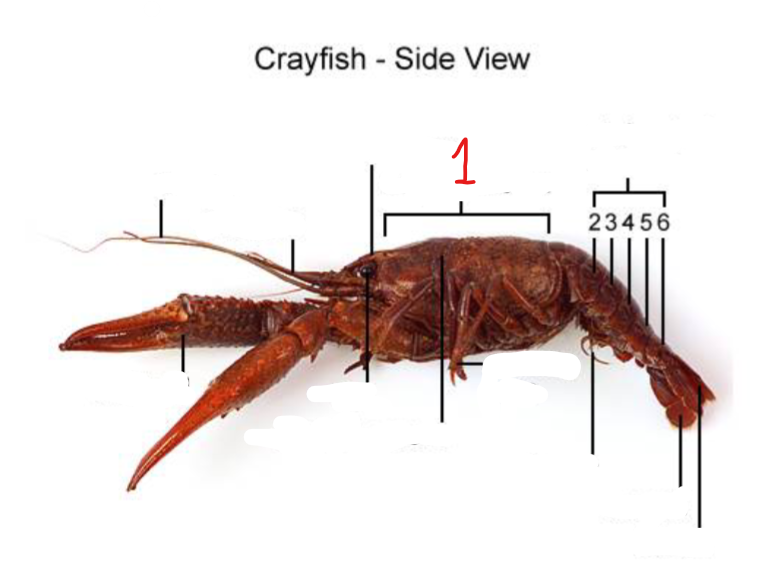
1
Cephalothorax
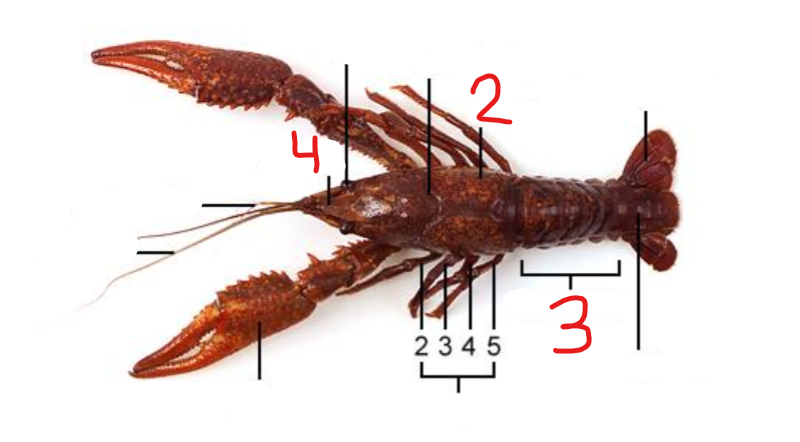
2
carapace
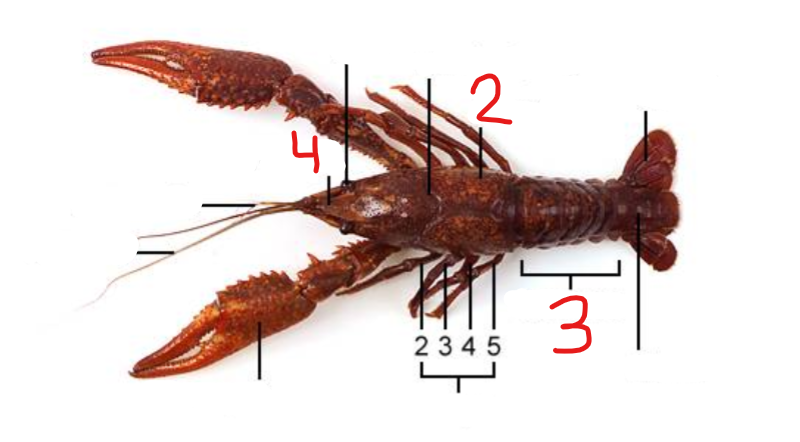
3
abdomen
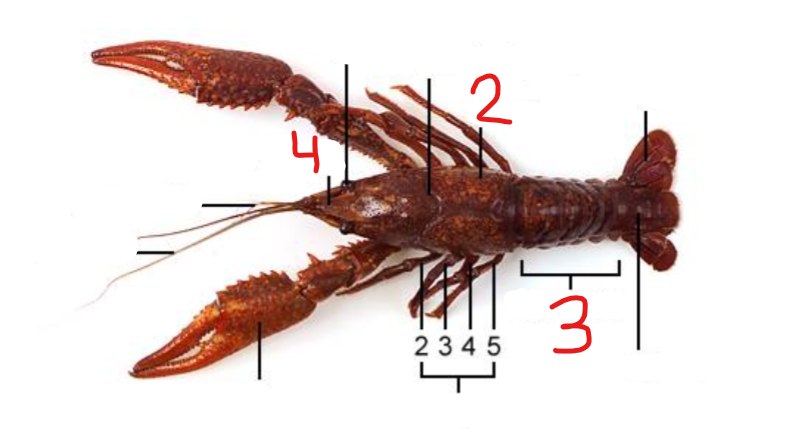
4
rostrum

1
Stomach
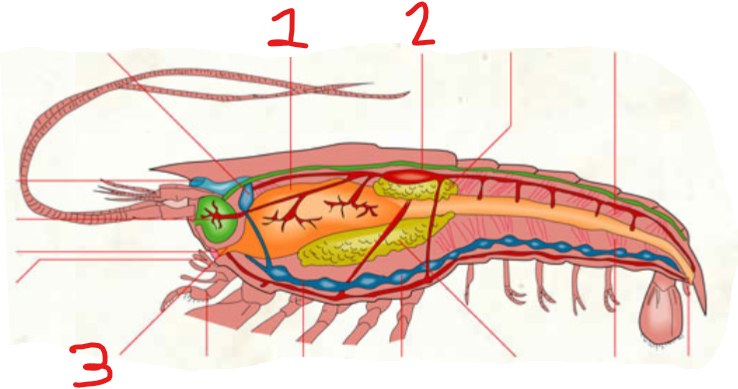
2
Heart
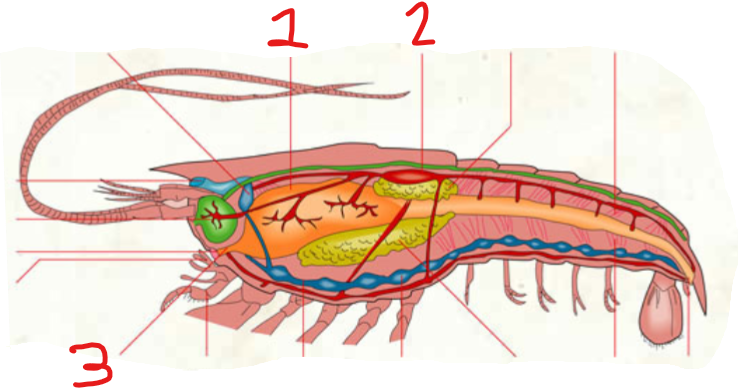
3
Entrance to intestines
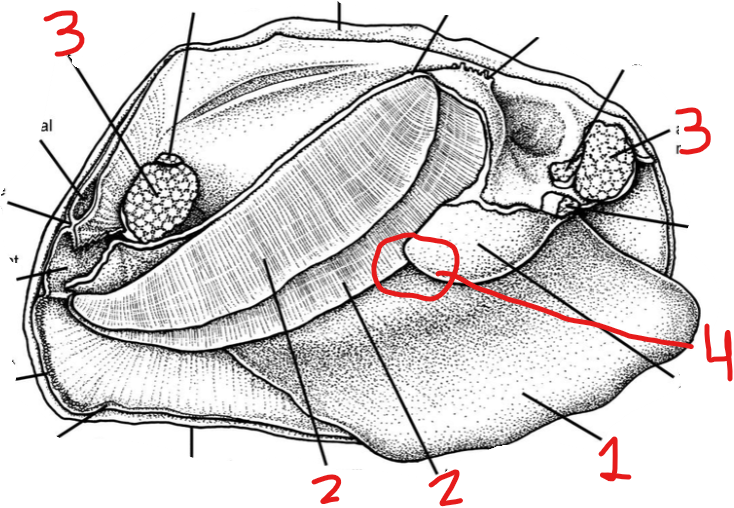
1
Foot
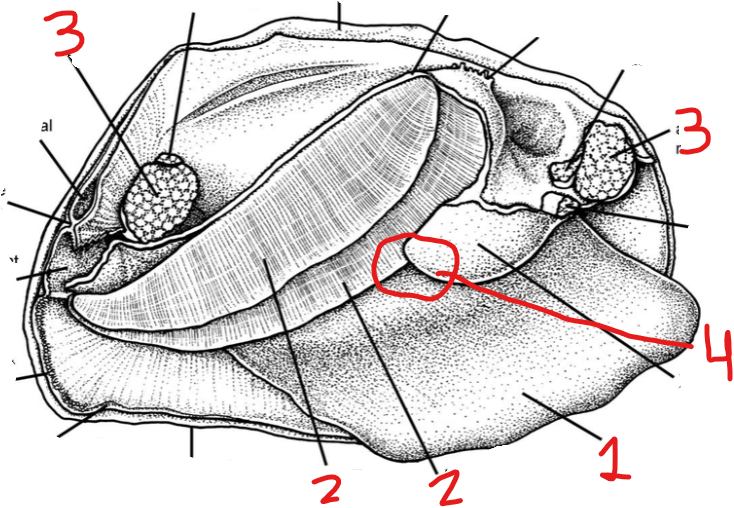
2
gills
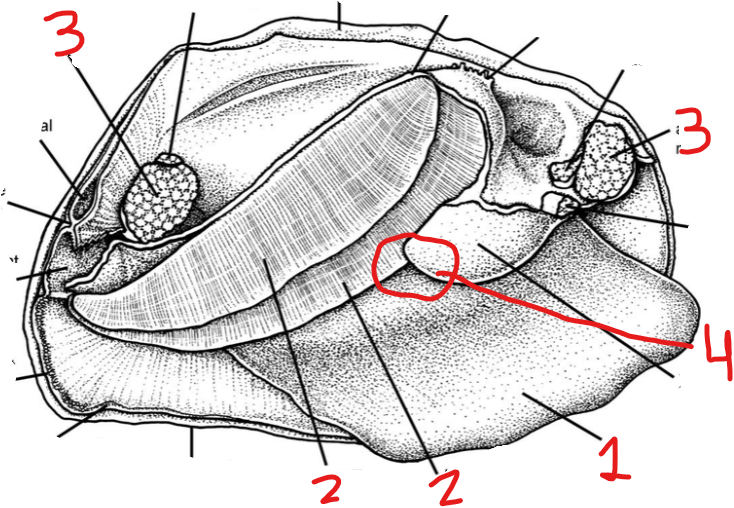
3
abductor muscles
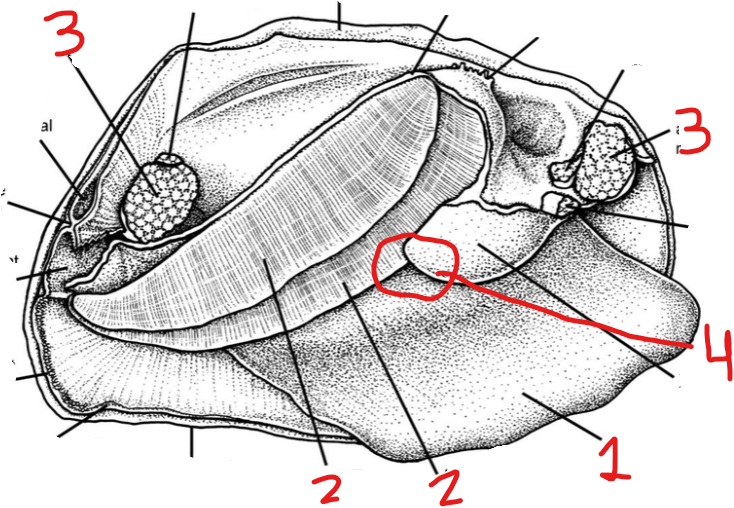
4
visceral mass